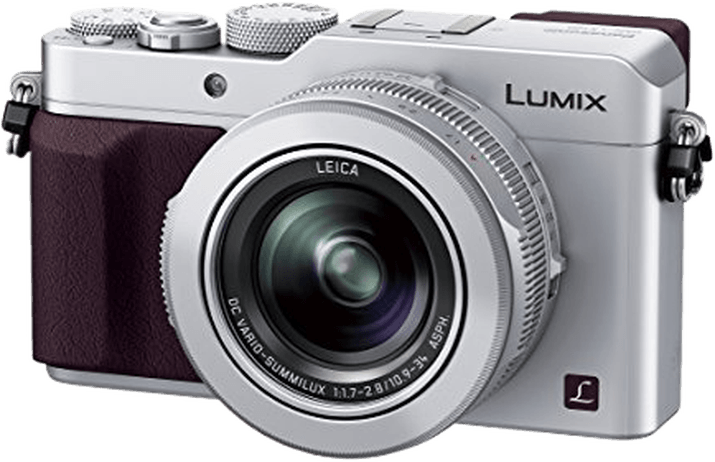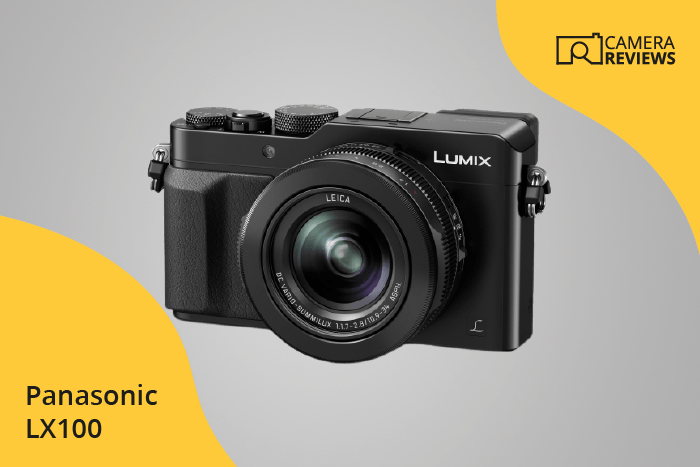Panasonic Lumix DMC-LX100 Specs and Scores

The Panasonic Lumix DMC-LX100 receives a score of 49/100. This compact camera, announced in 2014, and released the same year, initially retailed for $899. The LX100 measures 115 x 66 x 55mm and weighs 393g (0.87lbs). While these specifications were impressive for its time, the camera now faces stiff competition in today’s market. Nonetheless, the Lumix DMC-LX100 remains a decent option for those seeking a reliable compact camera.
Panasonic Lumix DMC-LX100 Overview and Optics
The Panasonic Lumix DMC-LX100 receives a score of 56/100 for its optics. With 12.8 megapixels, a shooting speed of 11, and a CMOS sensor, this camera offers decent performance for its price range. The Venus Engine processor aids in producing quality images, while the DXOMARK score of 67 for the sensor reflects its capabilities.
A notable feature of the DMC-LX100 is the Micro Four Thirds sensor size, which is larger than the sensors found in most compact cameras. However, the fixed lens mount limits versatility, as it does not allow for lens changes. Image stabilization is present, ensuring steady shots, and the 4:3 aspect ratio ensures a classic photographic look.
The Panasonic Lumix DMC-LX100’s optics perform well in today’s market, but users seeking advanced capabilities or greater versatility may want to explore other options.
Panasonic Lumix DMC-LX100 Video Performance
The Panasonic Lumix DMC-LX100 has a video score of 70 out of 100, which reflects its capabilities in video recording. The camera offers a 4K max video resolution, with dimensions of 3840 x 2160. This high resolution enables users to capture detailed and sharp videos, making it suitable for various applications.
The camera’s max video frame rate stands at 30fps, which is standard in today’s market. This frame rate ensures smooth video playback and allows for adequate motion capture in most situations. Additionally, the Lumix DMC-LX100 features built-in time-lapse functionality, providing users with creative options for capturing dynamic scenes.
The Panasonic Lumix DMC-LX100’s video capabilities are respectable, offering high-resolution 4K video and a 30fps frame rate. The built-in time-lapse feature adds versatility to its video recording options. Although not the highest-scoring camera in the video category, the LX100 still provides solid performance for users focused on video capture.
Panasonic Lumix DMC-LX100 Features and Benefits
The Panasonic Lumix DMC-LX100 features score stands at 41/100. With a screen size of 3 inches and a screen resolution of 921,000 dots, the LX100 does not have a touchscreen but compensates with a flip screen. Although it lacks GPS and Bluetooth capabilities, it offers Wi-Fi connectivity.
In the current market, the LX100’s specifications may not be the most advanced. The absence of a touchscreen and Bluetooth might deter some potential users. However, the flip screen and Wi-Fi connectivity remain relevant and useful features for many photographers.
Considering the features and specifications, the Panasonic Lumix DMC-LX100 is a decent camera choice. While it may not excel in every aspect, it still offers a reliable set of features for various photography needs.
Panasonic Lumix DMC-LX100 Storage and Battery
The storage and battery of the Panasonic Lumix DMC-LX100 receive a score of 16/100. The camera has one memory card slot that accepts SD, SDHC, and SDXC cards with UHS-I compatibility. In today’s market, having a single memory card slot is common, but some higher-end cameras offer dual slots for increased storage and backup options.
The battery life of the LX100 is 300 shots per charge, which is relatively low compared to other cameras in its class. The battery type is DMW-BLG10E, and the camera does not have USB charging capabilities. This can be limiting for users who need longer battery life or more convenient charging options.
Considering these specifications, the LX100’s storage and battery aspects fall short in comparison to some competitors. Users may need to invest in additional batteries and memory cards to compensate for these limitations.
Panasonic Lumix DMC-LX100 Alternatives
Do you want to know how the Panasonic Lumix DMC-LX100 compares to its competitors? Have a look at the most popular comparisons for this camera below:
- Panasonic Lumix DMC-LX100 vs Lumix LX100 II
- Panasonic Lumix DMC-LX100 vs Lumix DMC-GX80
- Panasonic Lumix DMC-LX100 vs Sony Cyber-shot RX100 IV
- Panasonic Lumix DMC-LX100 vs Sony a6100
- Panasonic Lumix DMC-LX100 vs Sony a6600
- Panasonic Lumix DMC-LX100 vs Sony Cyber-shot DSC-RX100 VA
Panasonic Lumix DMC-LX100 FAQ
Does the Panasonic Lumix DMC-LX100 Have Built-in Image Stabilization?
Yes, the Panasonic Lumix DMC-LX100 features built-in optical image stabilization, which helps reduce camera shake and produce sharper images in various shooting conditions.
Does the Panasonic Lumix DMC-LX100 Support 4K Video Recording?
Yes, the Panasonic Lumix DMC-LX100 supports 4K video recording at 30fps, enabling high-quality video capturing for both casual users and enthusiasts.
What Size Sensor Does The Panasonic Lumix DMC-LX100 Have?
The Panasonic Lumix DMC-LX100 has a Micro Four Thirds sensor, which is larger than the sensors found in most compact cameras, providing better image quality and low-light performance.
Does the Panasonic Lumix DMC-LX100 Have a Dual Memory Card Slot?
No, the Panasonic Lumix DMC-LX100 has a single memory card slot that supports SD, SDHC, and SDXC cards for image and video storage.
Does the Panasonic Lumix DMC-LX100 Have a Touch Screen?
No, the Panasonic Lumix DMC-LX100 does not have a touch screen. Instead, it features physical controls and buttons for camera operation.
Does the Panasonic Lumix DMC-LX100 Have Wi-Fi and Bluetooth?
The Panasonic Lumix DMC-LX100 has built-in Wi-Fi for wireless image transfer and remote control, but it does not support Bluetooth connectivity.
Does the Panasonic Lumix DMC-LX100 Have GPS?
No, the Panasonic Lumix DMC-LX100 does not have built-in GPS functionality for geotagging your images.
Is the Panasonic Lumix DMC-LX100 Weather Sealed?
No, the Panasonic Lumix DMC-LX100 is not weather sealed, so it is not recommended for use in extreme weather conditions or environments without proper protection.
Does the Panasonic Lumix DMC-LX100 Have a Built-in Flash?
No, the Panasonic Lumix DMC-LX100 does not have a built-in flash. However, it comes with an external flash unit that can be attached to the camera’s hot shoe.

